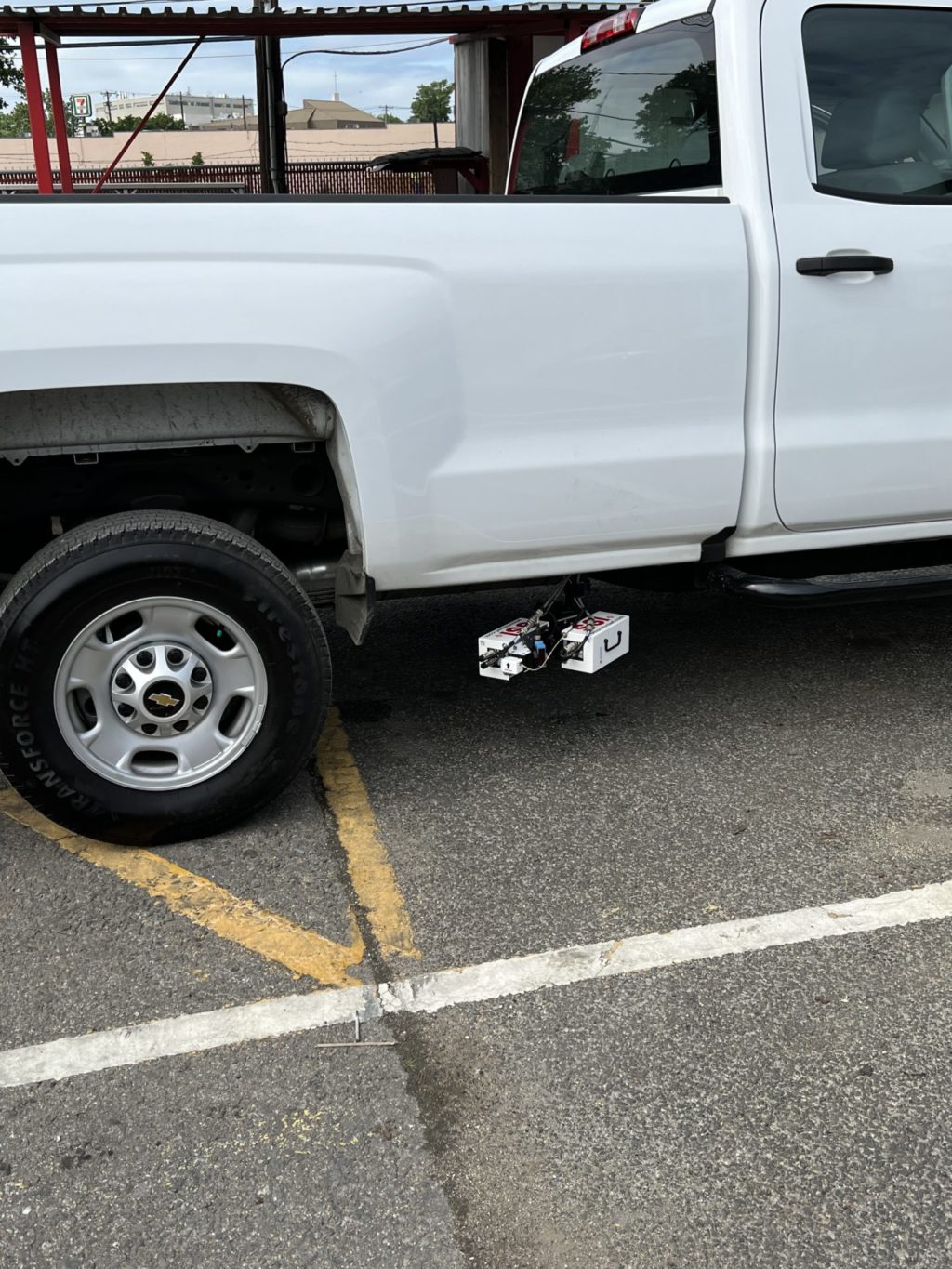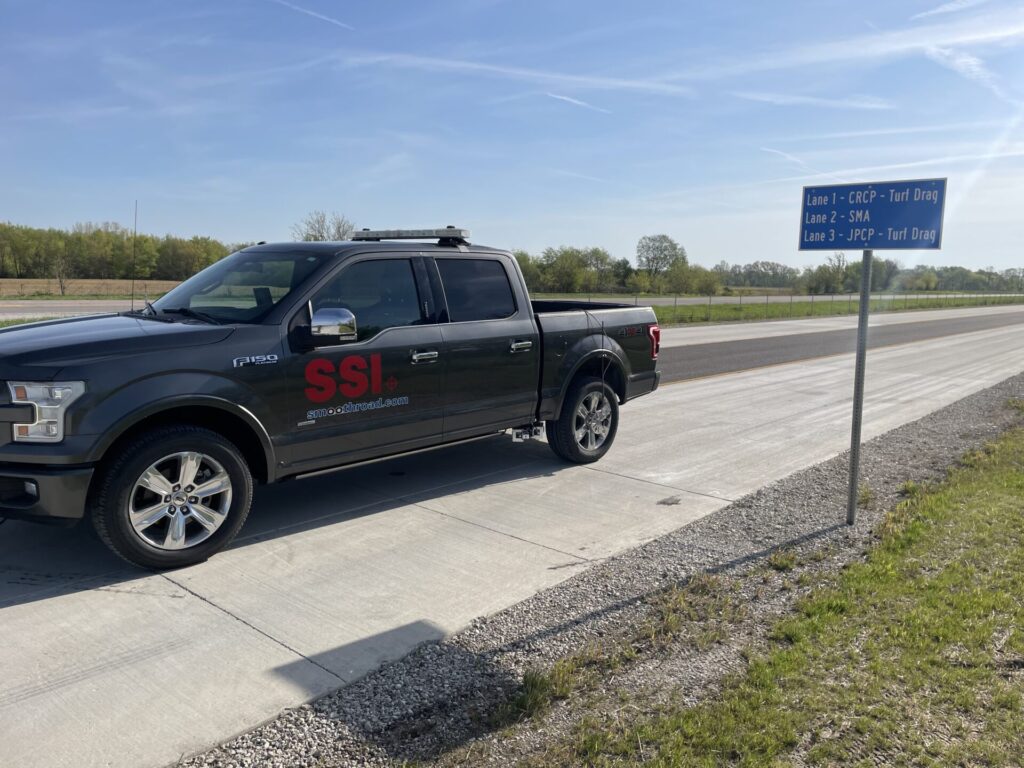SSI’s Texture Laser Orientation R&D Is Confirmed By Two NCHRP Studies
NCHRP and RELLIS MPD Reports Recommend SSI's Pioneered 45-Degree Line Laser Orientation
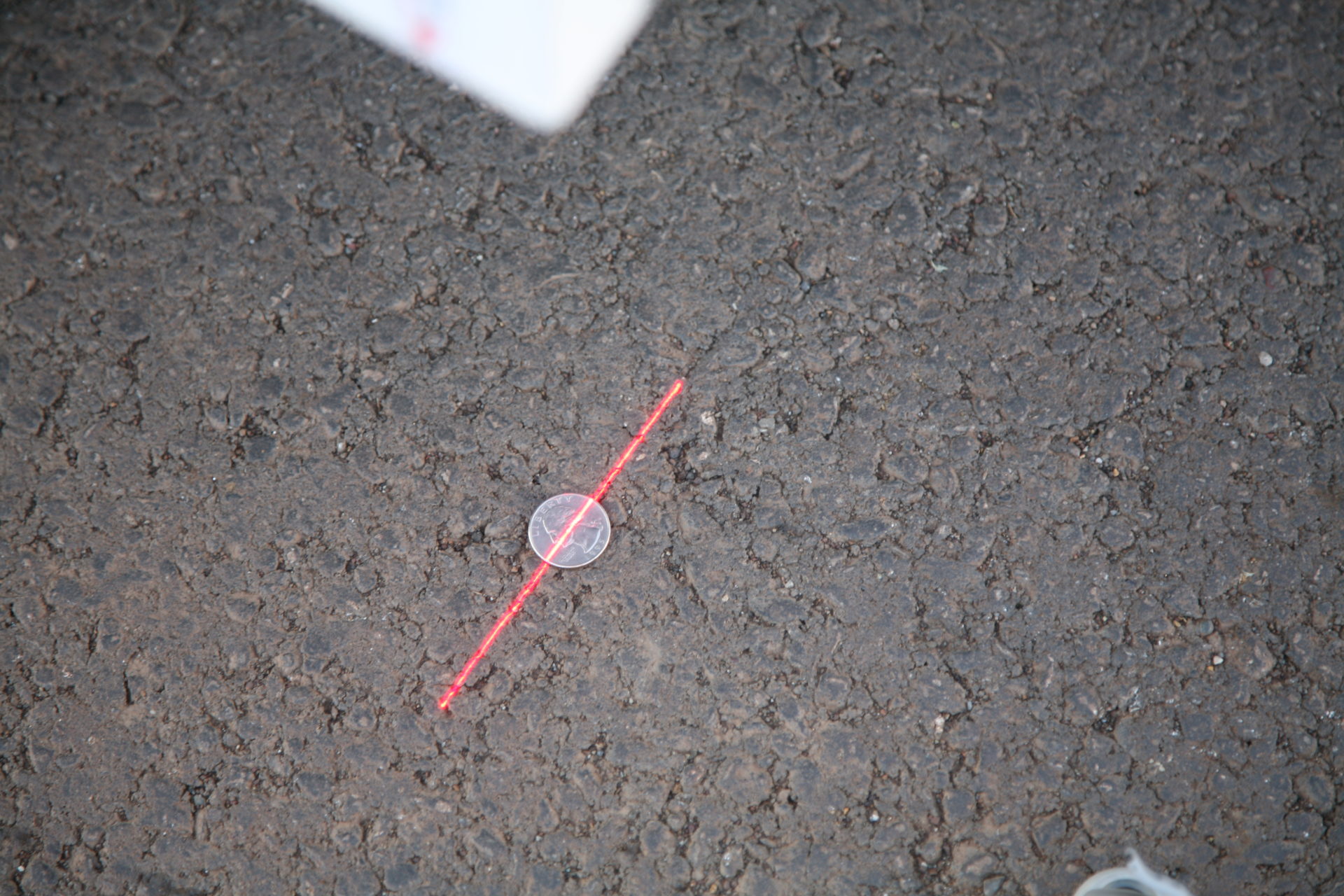
Introduction
There are multiple different types of pavement and surface textures. A pavement type generally has a specific surface property based on the aggregate matrix or a characteristic built-in, like transverse or longitudinal tining. Common pavement types were recently tested within the NCHRP 10-98: Protocols for Network-Level Macrotexture Measurement and TRB Paper 21-00578: Comparative Evaluation of Pavement Macrotexture Measurements From Different Devices.
A high frequency dot laser is still a commonly used, standard tool to measure Mean Profile Depth (MPD) on walking profilers and inertial profilers. The downfall of the dot laser is its footprint. On longitudinally textured surfaces the dot reference does not measure the full surface characteristic. For example, on longitudinally tined concrete pavement the dot will either be within the groove or on top of the pavement; never both.
Line lasers are common sensor types for ride quality measurement to average the texture of the pavement for representative IRI numbers. Line lasers can have over 1,000 measurement points within a 100mm span. Most DOTs have transitioned to line lasers because of irregular ride value measurements, especially on concrete. A dot laser may have 10-15% higher IRI values than a line laser on an asphalt surface.
Dot Laser Footprint
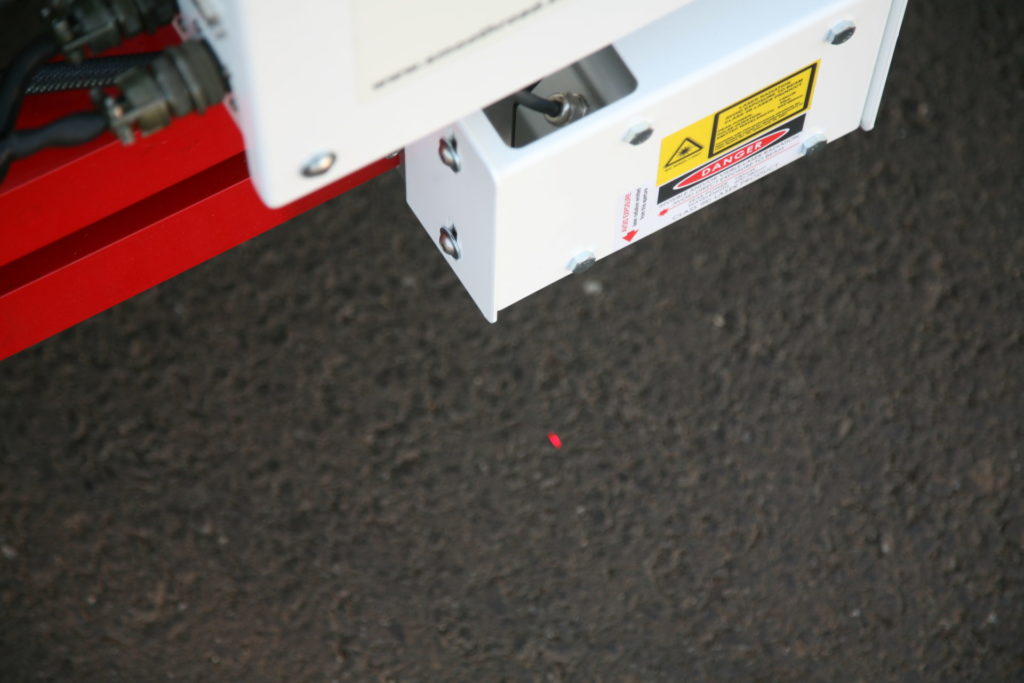
SSI’s Testing and Research
SSI’s development of MPD measurement using a 100mm line laser has performed well at two NCHRP studies. The SSI electronics allow for simultaneous texture and ride quality measurements using one laser sensor. Throughout the past few years, SSI has researched the effect of laser angle on ride quality and MPD measurements at our Manhattan, Kansas R&D office. Setting the laser at an angle allows a line laser to bridge over transverse characteristics, like tining and joints. All of SSI’s inertial profiler systems have a 5-degree angle to bridge over joints. For our MPD testing, we determined that 45-degrees was the most effective angle. Our new Zero-Speed Inertial Profiler hardware has the laser sensors set near 45-degrees.
Going further, SSI was the first to implement a 45-degree laser which was proven by these studies to accurately report MPD on all surfaces, except high texture surfaces like Open Graded Friction Course (OGFC). The 45-degree mounted laser performed especially well on transverse tined concrete pavements.
SSI Zero-Speed Inertial Profiler Hardware
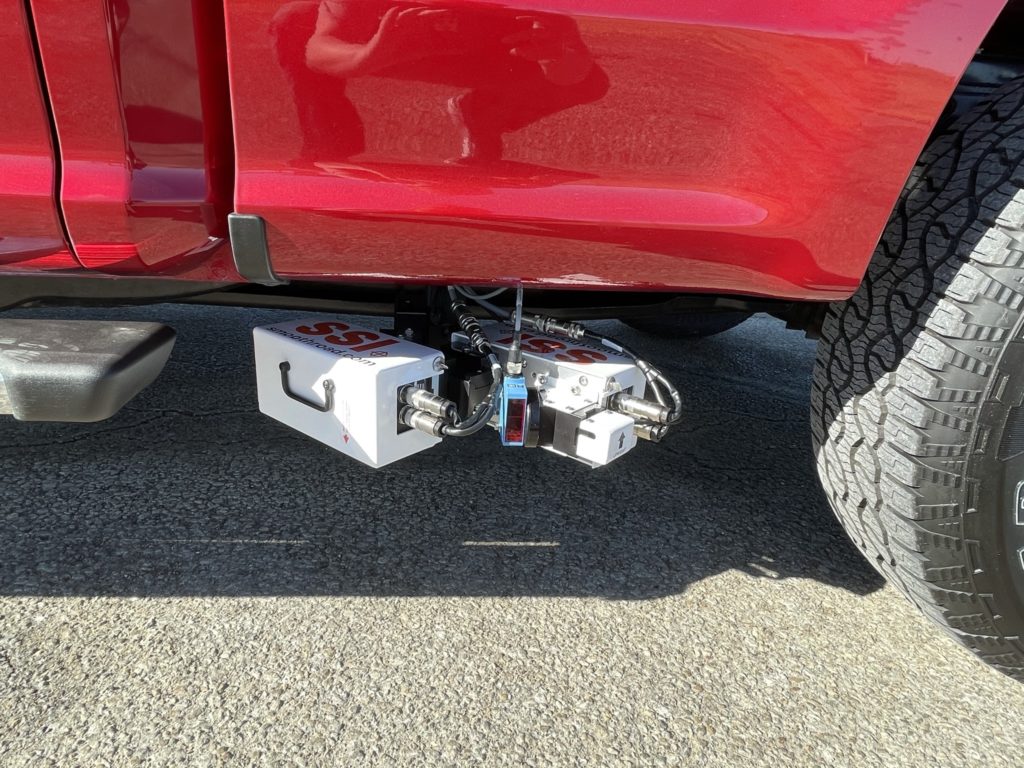
MPD Texture Research Studies
The outcomes of the two NCHRP sponsored studies on MPD measurement confirm SSI’s findings; line laser macrotexture measurement is an improvement over dot lasers. The added benefit is most systems are already using line lasers to measure ride quality and the SSI upgrade to a macrotexture system is simple. Below are highlights from the conclusions of the two reports.
NCHRP 10-98 Research
- Systems with a line laser oriented at 45-degrees is the most practical MPD measurement system
- Single spot lasers are not capable of capturing longitudinal texture
- Most commercial systems are repeatable if compared to another same-type system (i.e. spot laser to spot laser)
- Walking texture meters can be used as a reference to certify high-speed systems
- Engineered surfaces should be used to confirm laser MPD measurements
RELLIS Research
- A longitudinally grooved surface should use 45-degree line lasers for macrotexture measurement
- Test speed is not significant for line lasers under auto exposure
- Except for OGFC, line lasers oriented at 45-degrees agreed within 0.1mm of reference device
- 0-degree line laser had errors above +/-0.1mm on OGFC, HMA and SMAF
- Walking reference device needs to account for angled measurement of high-speed laser sensor
Link to the original published article:
www.trb.org/Publications/Blurbs/182060.aspx

